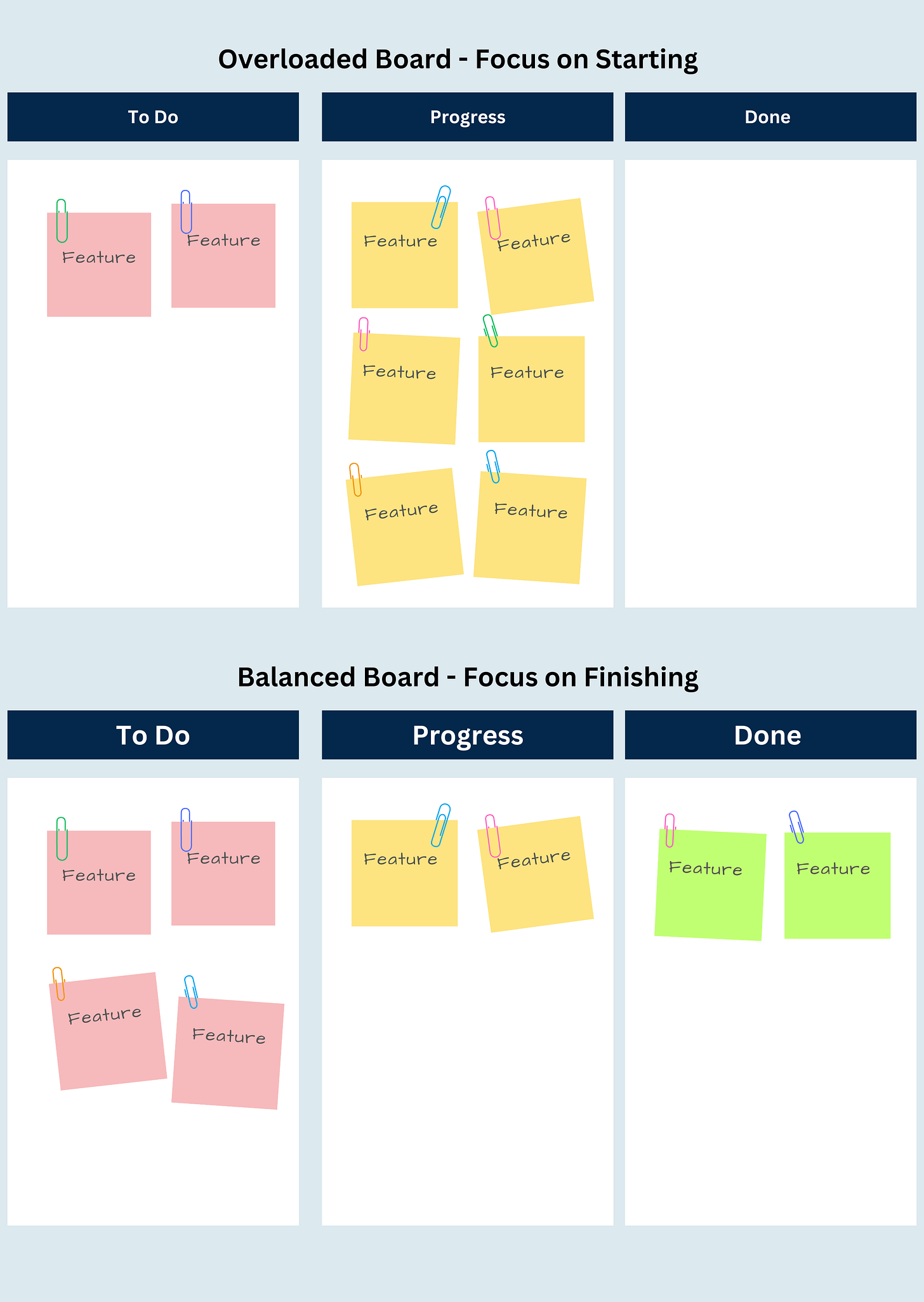Why Your Product Features Are Taking Forever to Ship
The hidden challenges behind shipping product feature delays
In the last product review meeting, the same concerning question came up: “Why is this product feature taking so long? Wasn’t it just a small software change that should’ve been wrapped up in a few hours? Why is the engineering team holding the next deal back?”
And while you might be easily pointing fingers at the engineering teams because of the missed deadline, the reality is far more nuanced.
The truth?
Software delays are rarely caused by laziness or lack of effort.
Instead, they’re the result of an entangled web of reasons that span across the whole organization. They are deeper, systemic issues that affect both developers and stakeholders.
Misaligned priorities, communication breakdowns, and technical debt all play a role, and until these challenges are addressed, the delays will continue.
Most Common Reasons Why Shipping Is Slower
Let’s dive into the most common obstacles behind slower feature delivery. Understanding these factors is the first step toward tackling them effectively.
The Illusion of Perfect Planning
Time estimates in software engineering are most often inaccurate.
Yet, as flawed as they may be, estimates are essential. They are the communication bridge between teams, stakeholders, and customers.
When timelines for the next product feature are estimated, several things commonly go wrong.
Pressure to be optimistic. Engineers may feel compelled to give overly optimistic estimates to satisfy stakeholders and avoid disappointment. This “best-case scenario” approach often overlooks hidden complexities, leading to unrealistic expectations that later fall short.
Overcompensation. On the flip side, some engineering teams go to the other extreme—adding excessive buffers to their timelines to confidently meet their promise. While this avoids disappointment, it slows overall progress and limits the team's ability to take on bigger challenges.
Top-Down timelines. A worse scenario? Stakeholders set deadlines without consulting the engineering team. Sure, these timelines might be necessary to close the new deal, but without understanding the technical complexity, they create significant risks - disappointed customers or engineers being forced to implement "quick fixes" that damage the overall software health.
These mismatched expectations create a vicious cycle of frustration. Stakeholders feel let down by missed deadlines or slower progress. Engineering teams feel trapped between pressure to deliver quickly and the reality of their complex work.
Software Maintenance Matters
Software engineering isn’t just about development of new features—it’s also about keeping the existing codebase stable and functional.
In reality, a significant portion of a developer’s time is dedicated to maintaining the existing codebase. Bug fixes, upgrading outdated libraries, and adapting to evolving requirements aren’t optional—they’re essential to keeping the product functional and stable.
Beyond that, the process of launching a feature to production involves much more than just coding. Design, testing, deployments, and handling operational issues are all integral parts of the engineering workflow.
When this effort isn’t accounted for in planning, missing a critical deadline due to an urgent bug fix can be incredibly frustrating. However, rather than treating it as bad luck or using the bug as an excuse for the delay, maintenance work should be acknowledged as a fundamental part of the development process. It must not be overlooked or undervalued.
Software development isn’t a one-time effort. When estimating the cost of a new feature, don’t just plan for the development phase—factor in ongoing maintenance costs.
A good rule of thumb?
The Domino Effect: Dependencies Among Teams
The product team is building a new feature. To ship it, they need the platform team to make changes in the SAP platform foundation. But the platform team can’t start because they’re waiting on a bug fix from an external vendor. And just like that, the planned timeline starts to collapse.
Here is the problem:
The product team creates their timeline based solely on their own effort, assuming the platform team will prioritize their request. But the platform team has its own list of urgent issues, and by the time they finally get to this “small update,” they hit yet another roadblock—a minor issue requiring action from an external vendor. The domino effect begins.
Dependencies between teams are one of the most frustrating and underestimated causes of delays. They create a fragile web of interconnected tasks, and the more complex the connections, the greater the risk of a cascading effect when even one link in the chain breaks.
What makes dependencies so problematic?
Complex software and team architecture, inefficient processes. When the teams’ structure does not reflect the software system’s architecture, dependencies inevitably arise with every new feature development. Combined with weakly enforced processes or poor coordination, these seemingly minor dependencies can quickly snowball into significant delays.
Wrong estimates and unmet commitments. If each team underestimates the true complexity of their work or downplay their dependencies on other teams, unrealistic commitments start to spread. When reality hits, timelines are blown, significantly extending the lead time for delivering the new feature.
Diminishing urgency with each handoff. What begins as urgent for the product team gradually loses priority as it moves down the chain. For the next team, it’s just another task in the queue. The further the ball is passed, the less urgency remains—leaving a task critical for one team to stagnate in the backlog of another team.
Too Many Priorities, Not Enough Focus
I know how intense product review meetings can get.
Multiple stakeholders are anxiously waiting for their preferred feature to ship, each believing their initiative is the top priority. Or a business leader insisting that all the listed initiatives are of high priority—with a seemingly valid reason for each one.
As a result, the product and engineering teams chooses the route to work on all these “equally important” priorities in parallel.
The outcome?
Instead of speeding up delivery, everything ends up in the “In Progress” state and the lead time for any of the items to cross the finish line increases significantly.
While it might seem comforting for stakeholders to see all their preferred features marked as “In Progress,” the reality is, nobody wins.
Success isn’t about starting everything—it’s about finishing something. Until features cross the finish line, everyone remains stuck in a deadlock, waiting for progress that feels painfully slow.
Context Switching: The Hidden Productivity Killer
You’ve probably asked—or been asked— before: “Do you have five minutes for a small question?”
Sure, it might only take five minutes to address that small question, but the mental capacity you need to context switch and later return to your original task is a completely different story.
Software engineering, in particular, requires deep focus and sustained concentration. Each interruption—whether it’s a quick question, a meeting, or an urgent issue—disrupts this flow, impacting both the quality and productivity of the work. The more different the context of the interruption is from the task at hand, the greater the cognitive load required to refocus.
In fact, research shows that it takes 23 minutes to regain your mental state after being interrupted during deep work. This means even small, seemingly harmless interruptions come at a much larger cost than they appear.
But it doesn’t stop there. Small distractions and low-value meetings add up over time, further eroding productivity.
The impact becomes even more pronounced when engineers are juggling multiple priorities: fixing an urgent issue that pops up while working on a deep research activity has a high productivity cost.
This constant context switching not only slows progress but also increases the likelihood of mistakes and missed details.
Quick Fixes That Backfire Later
Engineers often face this decision to make: build a future-proof feature or deliver a partial solution - a quick fix necessary to meet the tight deadline.
With pressure arising and no time to spare, they’re forced to choose the shortcut, promising themselves they’ll revisit and fix it later.
But that "later" moment rarely comes.
As new features, deadlines, and priorities pile up, these shortcut improvements get buried in the backlog, forgotten until they show their ugly face at the worst possible moment - during an important go-live. The cost of that quick fix then resurfaces and technical debt now has to be paid off.
Shortcuts are a ticking time bomb in software development, and their true cost is always paid—just later, and often at a higher price.
Burdened By Legacy Decisions
A software system is built on decisions made in the past.
While these decisions were valid at the time, as business evolves, growth accelerates, and technology advances, those once-sound solutions can quickly become outdated. The architecture that effectively served the business yesterday becomes a bottleneck for the business today.
Modernization—whether through IT migrations, re-architecting systems, or adopting newer technologies—is a natural and necessary part of the software lifecycle.
Yet, when engineering teams bring these issues to the table, they’re often met with resistance.
Why?
The investment required for big changes is significant, and the benefits aren’t always immediately visible. For business leaders focused on securing the next deal or expanding market share, prioritizing a migration is a hard sell. After all, a migration won’t win the new contract, but it could delay one.
This lack of awareness about the long-term benefits leads to modernization efforts being deprioritized.
The result?
Teams continue to patch and work around outdated systems, creating inefficiencies and increasing the risk of failure. The business might feel like it’s saving time and money, but in reality, it’s gambling with the future software stability and team’s productivity.
To Sum Up
The reasons behind software delays are rarely straightforward. They stem from a web of interconnected challenges—ranging from organizational priorities and team structures to inefficient processes and the technical quality of the software itself.
This isn’t an engineering problem only.
It’s a shared responsibility. From company leadership setting realistic priorities, to stakeholders understanding the complexities, to product managers prioritising effectively, and engineers advocating for better practices—everyone has a role to play in addressing these issues.
In the next articles, I’ll dive into practical solutions and explore what each group—leaders, stakeholders, PMs, and engineers— can do to tackle these challenges and help ship features faster and more predictably.
Stay tuned!
Access other relevant content on Lean Product Growth






